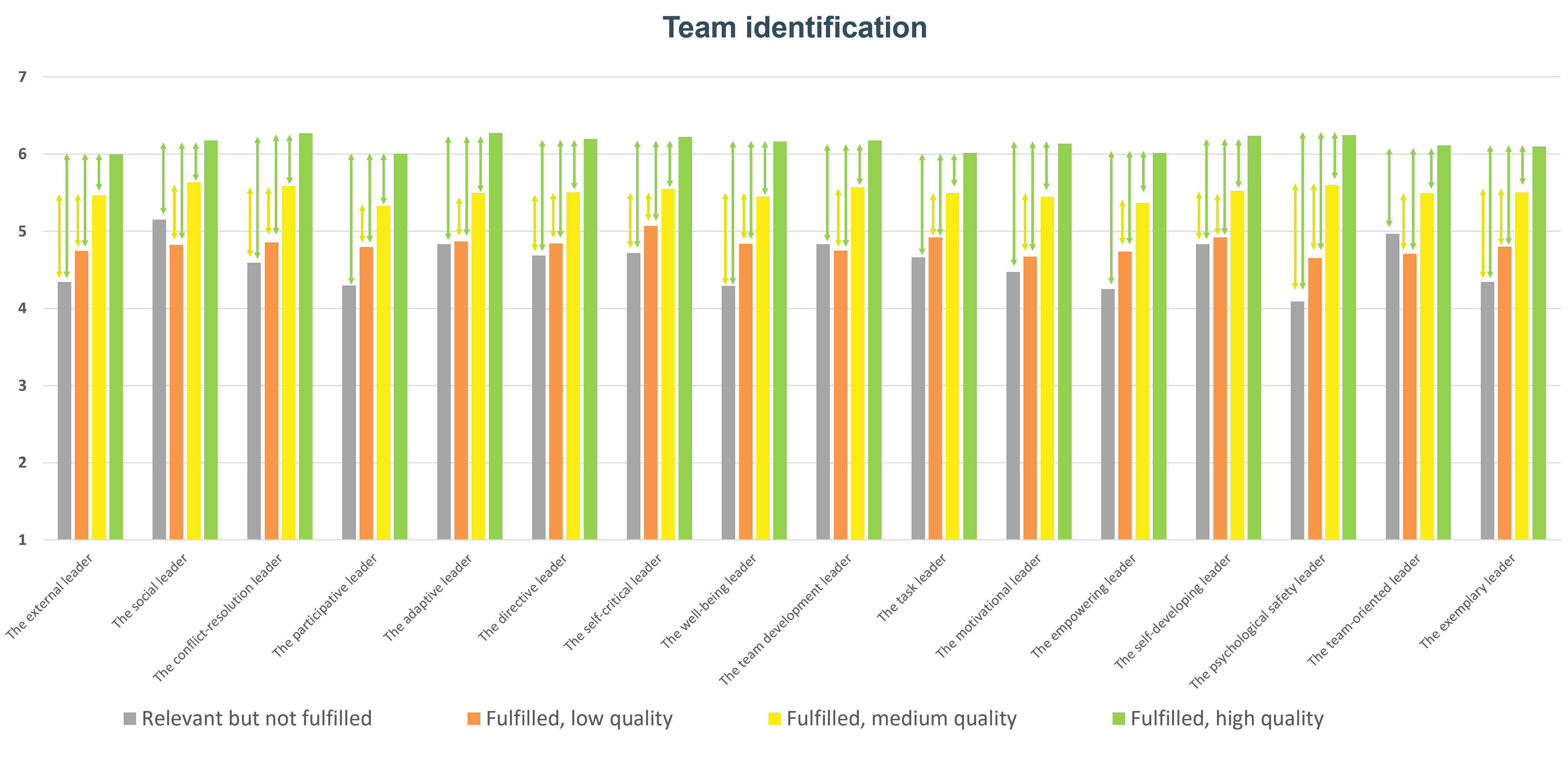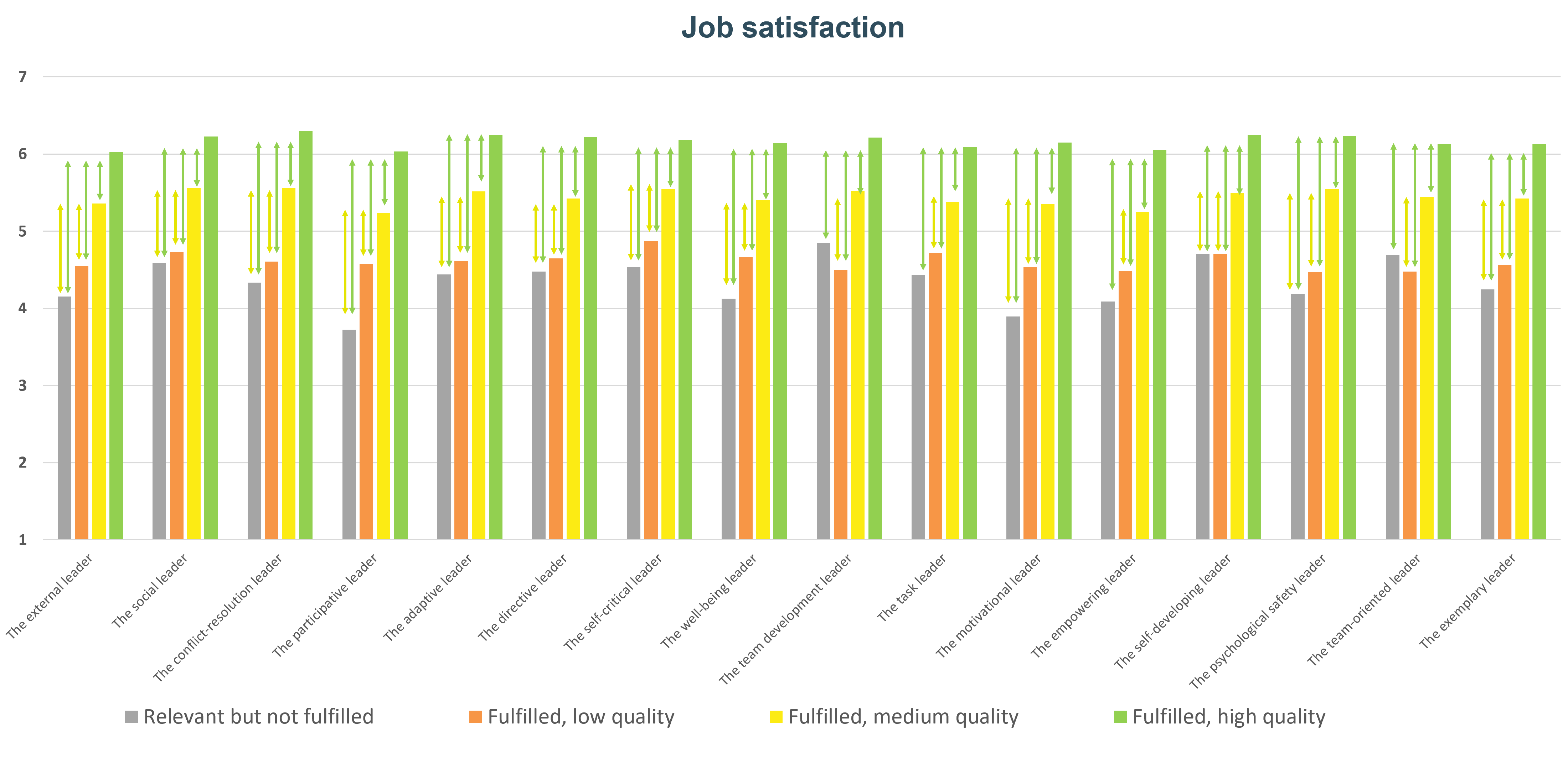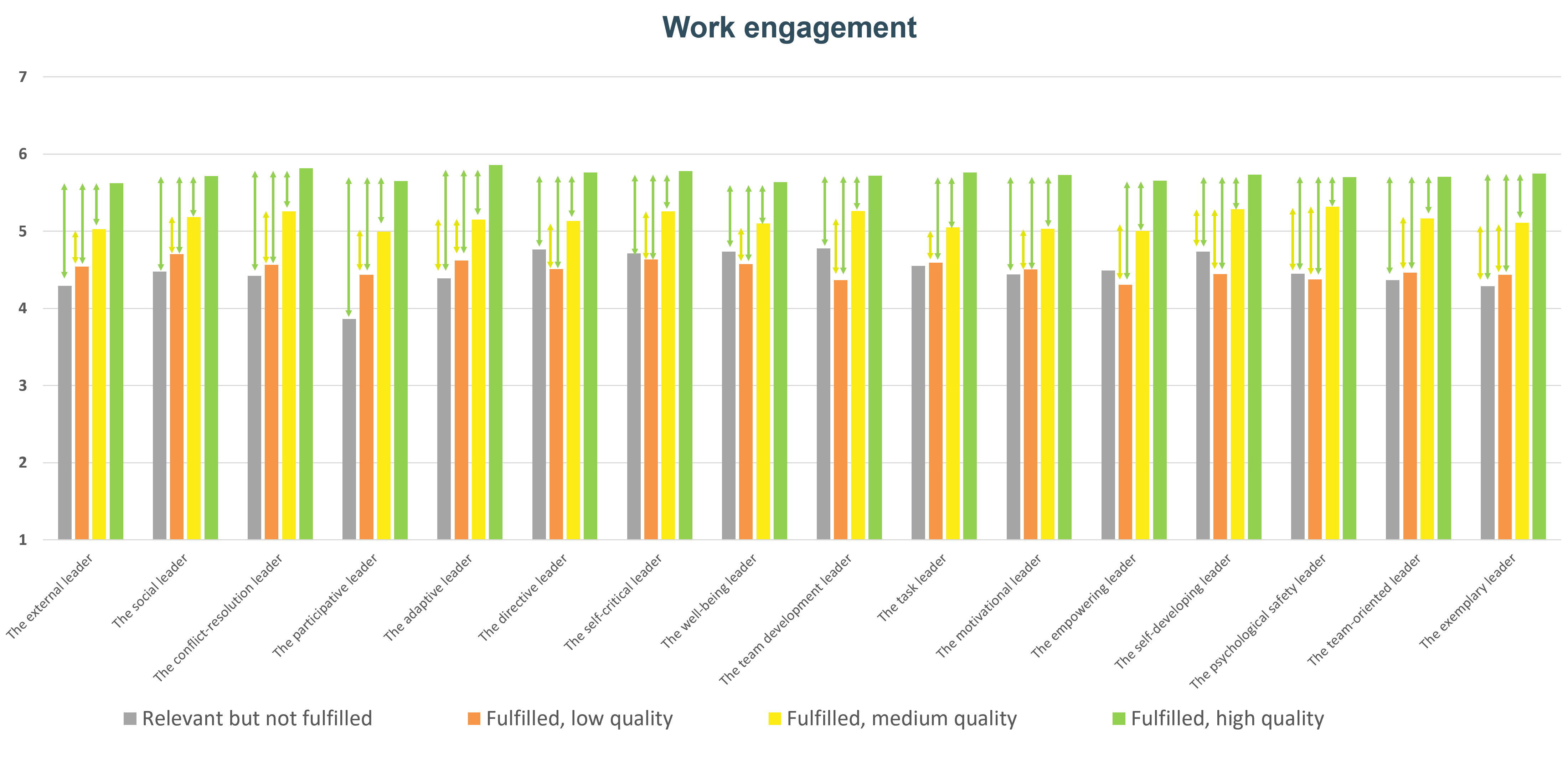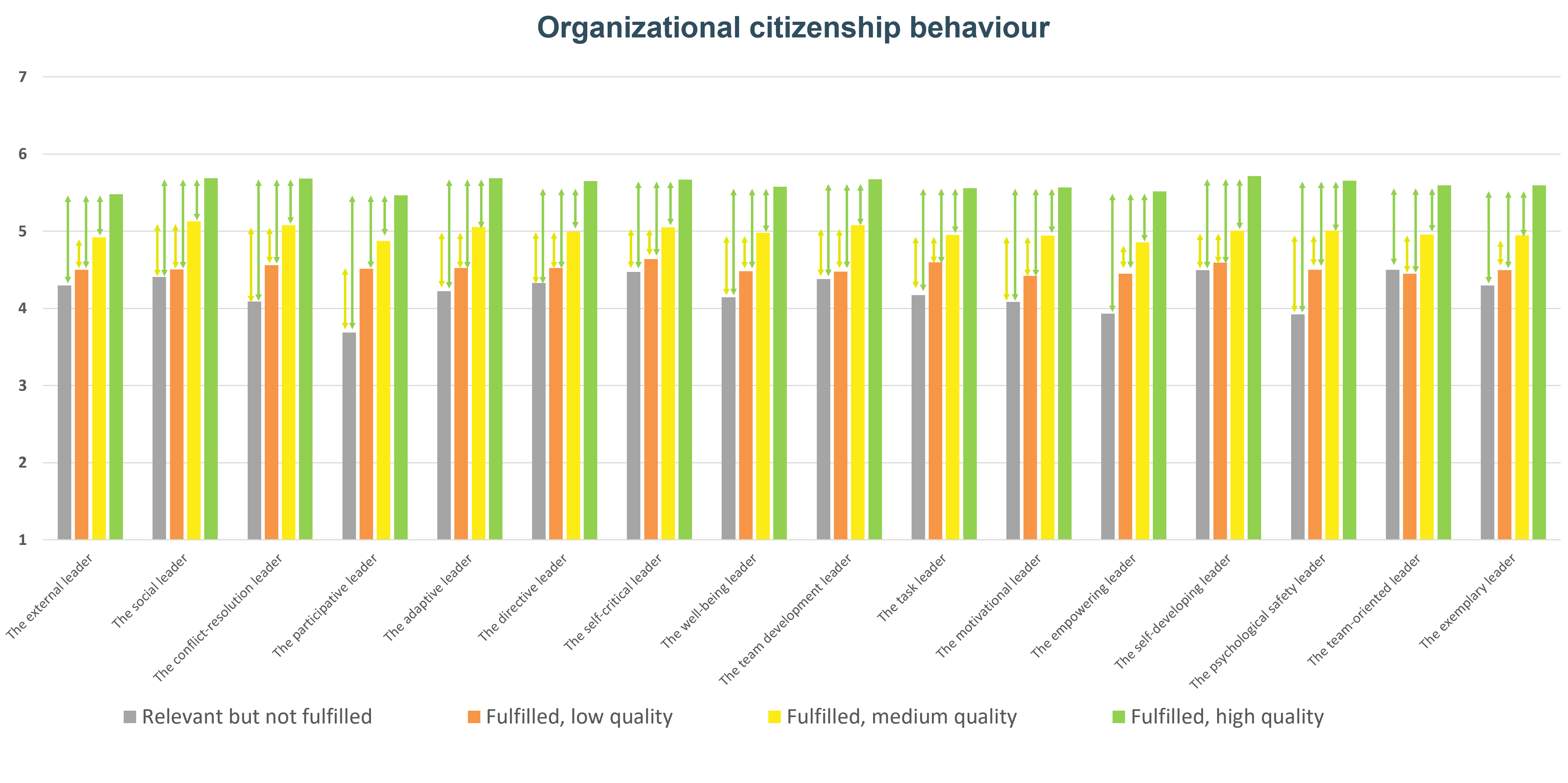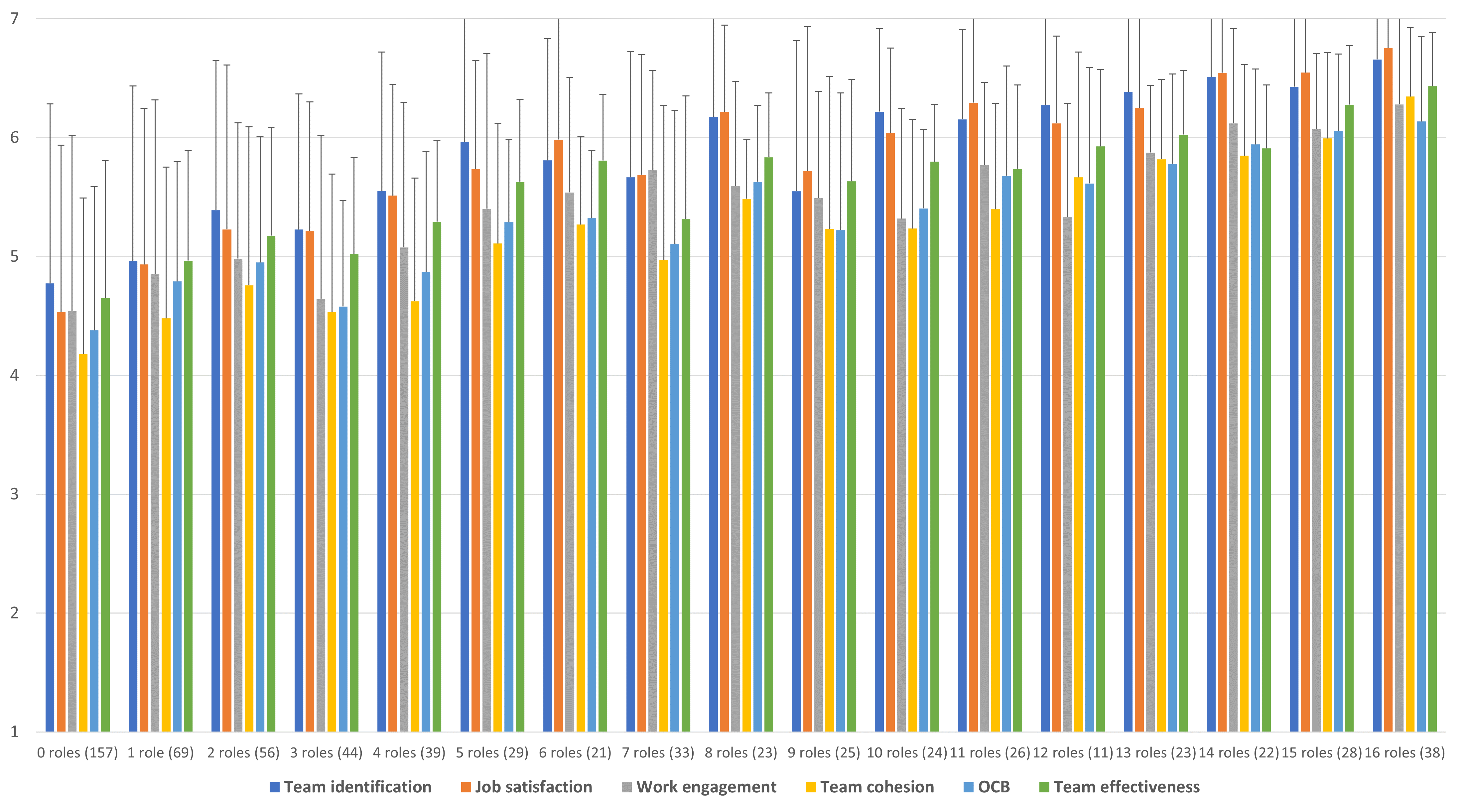Formal leadership roles related to outcomes
Similarly to the results of the peer leadership roles, the previous results of the formal leadership roles could be improved upon due to the correlation table only considering data for perceived leadership quality, which was rated on a Likert scale from 0-10. It does not include data from participants who perceived a leadership role as “relevant but not fulfilled”. To address this limitation and gain a more comprehensive understanding of the relationship between leadership roles and team outcomes, we conducted multivariate analyses of variance (MANOVA).
Each leadership role was divided into four categories: one for the data previously not included as (1) relevant but not fulfilled, and three for when the leadership role was fulfilled as (2) low quality (scores 0-4), (3) medium quality (scores 5-7), and (4) high quality (scores 8-10). MANOVA was performed for each leadership role, examining its relationship with the six included outcome measures. The chart below presents the overall findings for the different MANOVA analyses.
The visual interpretation of these significant results can be found in the chart below.
Wilk’s Lambda | F | P | ηp2 | |
The external leader | .77 | 9.91 | < .001 | .09 |
The social leader | .73 | 11.60 | < .001 | .10 |
The conflict-resolution leader | .71 | 12.80 | < .001 | .11 |
The participative leader | .75 | 11.08 | < .001 | .09 |
The adaptive leader | .73 | 12.20 | < .001 | .10 |
The directive leader | .70 | 13.58 | < .001 | .11 |
The self-critical leader | .77 | 10.00 | < .001 | .08 |
The well-being leader | .73 | 12.12 | < .001 | .10 |
The team development leader | .72 | 12.47 | < .001 | .11 |
The task leader | .74 | 11.39 | < .001 | .10 |
The motivational leader | .69 | 14.56 | < .001 | .12 |
The empowering leader | .75 | 10.72 | < .001 | .09 |
The self-developing leader | .74 | 11.05 | < .001 | .09 |
The psychological safety leader | .64 | 17.50 | < .001 | .14 |
The team-oriented leader | .73 | 11.83 | < .001 | .10 |
The exemplary leader | .72 | 12.48 | < .001 | .10 |
η2 = .01; small effect; η2 = .06: medium effect; η2 = .14: large effect | ||||
Necessary Condition Analysis to identify critical formal leadership roles
In order to examine the critical levels of leadership quality necessary for the presence of the included outcomes, we conducted necessary condition analyses (NCA). These analyses aimed to determine if a minimum level of perceived leadership quality is required for certain outcomes, such as team identification. The full NCA findings are available upon request, but we will summarise the main conclusions here.
Overall, our findings indicate that there is not a critical minimum level of perceived leadership quality that is necessary for one particular formal leadership role to achieve high levels of team identification, job satisfaction, work engagement, team cohesion, organizational citizenship behaviour, or team effectiveness. While our previous findings strongly indicate that having a high-quality formal leader was associated with better scores on these outcomes, it appears that high-quality leadership on one particular leadership role is not an absolutely necessary condition.
Here you find an example graph for the relationship between the perceived quality of social leadership and team identification. The horizontal axis represents the perceived quality of cooperating leadership, while the vertical axis represents team identification. The graph displays three different sources of information: the Ordinary Least Squares (OLS), the Ceiling Envelopment - Free Disposal Hull (CE-FDH), and the Ceiling Regression - Free Disposal Hull (CR-FDH).
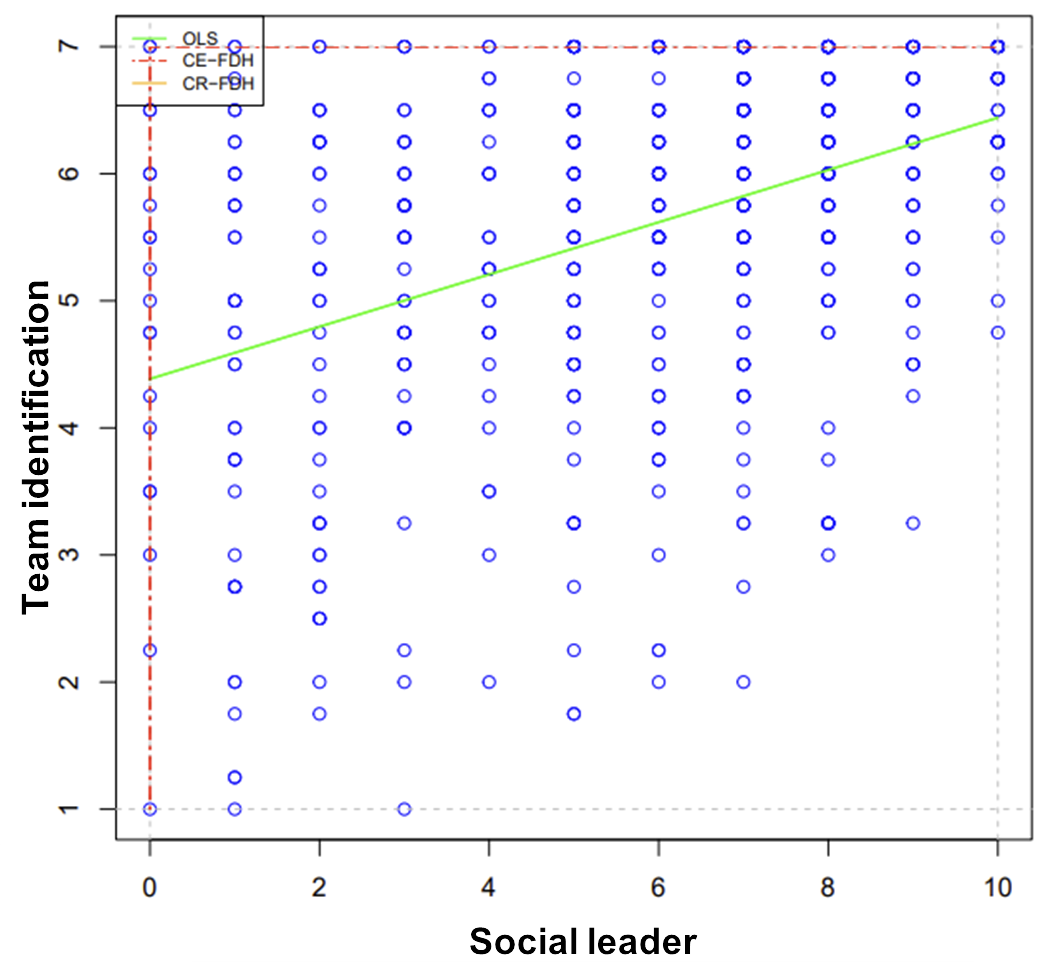
The OLS line represents a linear regression that estimates the overall relationship between perceived leadership quality for this specific leadership role and team identification. It provides an average estimate of how team identification changes as the perceived quality of leadership changes. However, in the context of necessary condition analysis, this line is not the main focus.
The CE-FDH line represents the upper limit or ceiling of team identification that can be achieved at specific levels of perceived leadership quality for the given leadership role. The CR-FDH technique is a ceiling approximation that smooths the step function obtained by the CE-FDH technique by using OLS regression through the upper-left corners of the step function.
In sum, while the OLS line confirms the positive relationship between the perceived quality of the social leader role and team identification, both CE-FDH and CR-FDH confirm that it is possible to reach maximal levels of team identification regardless of the perceived quality of social leadership.

